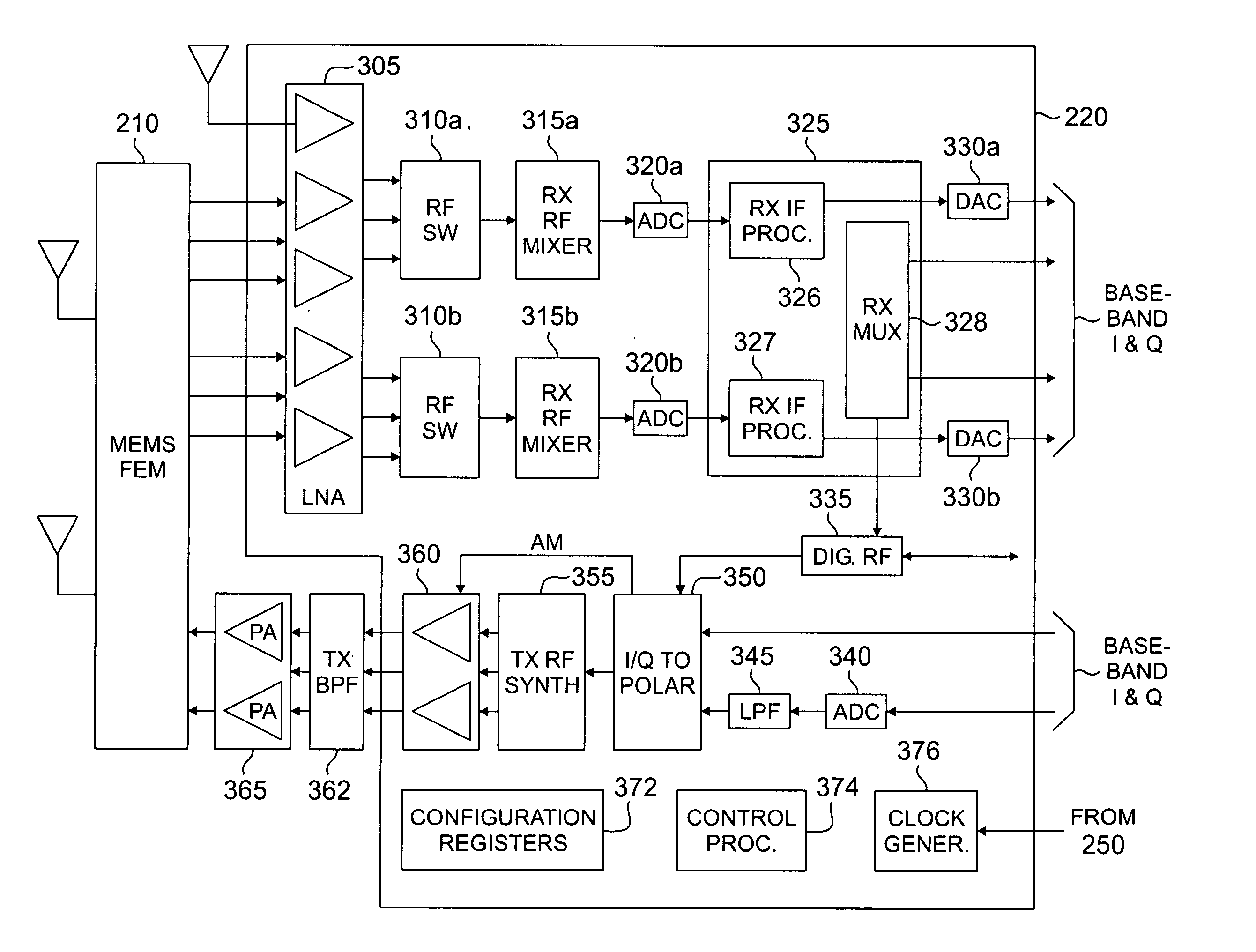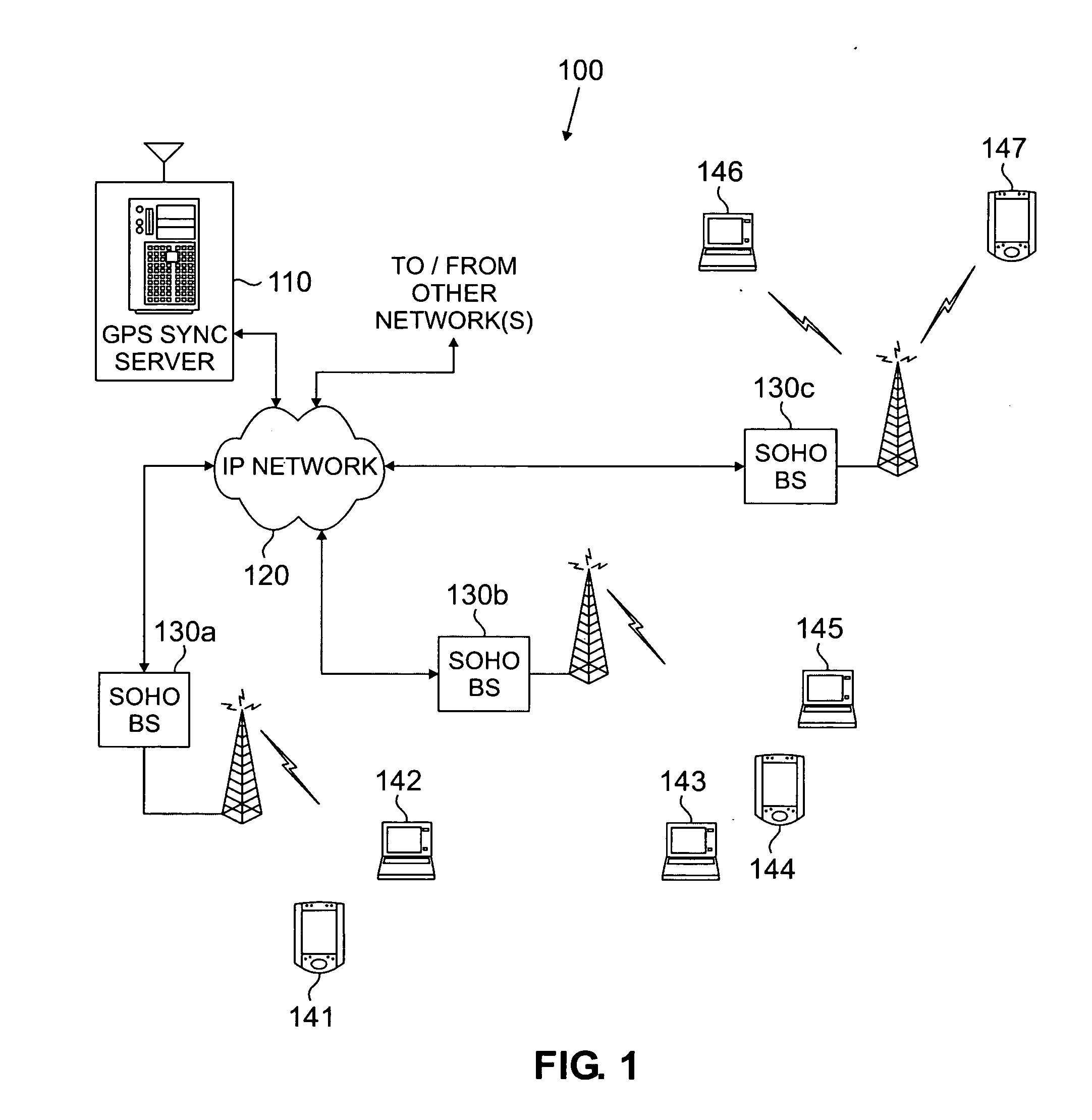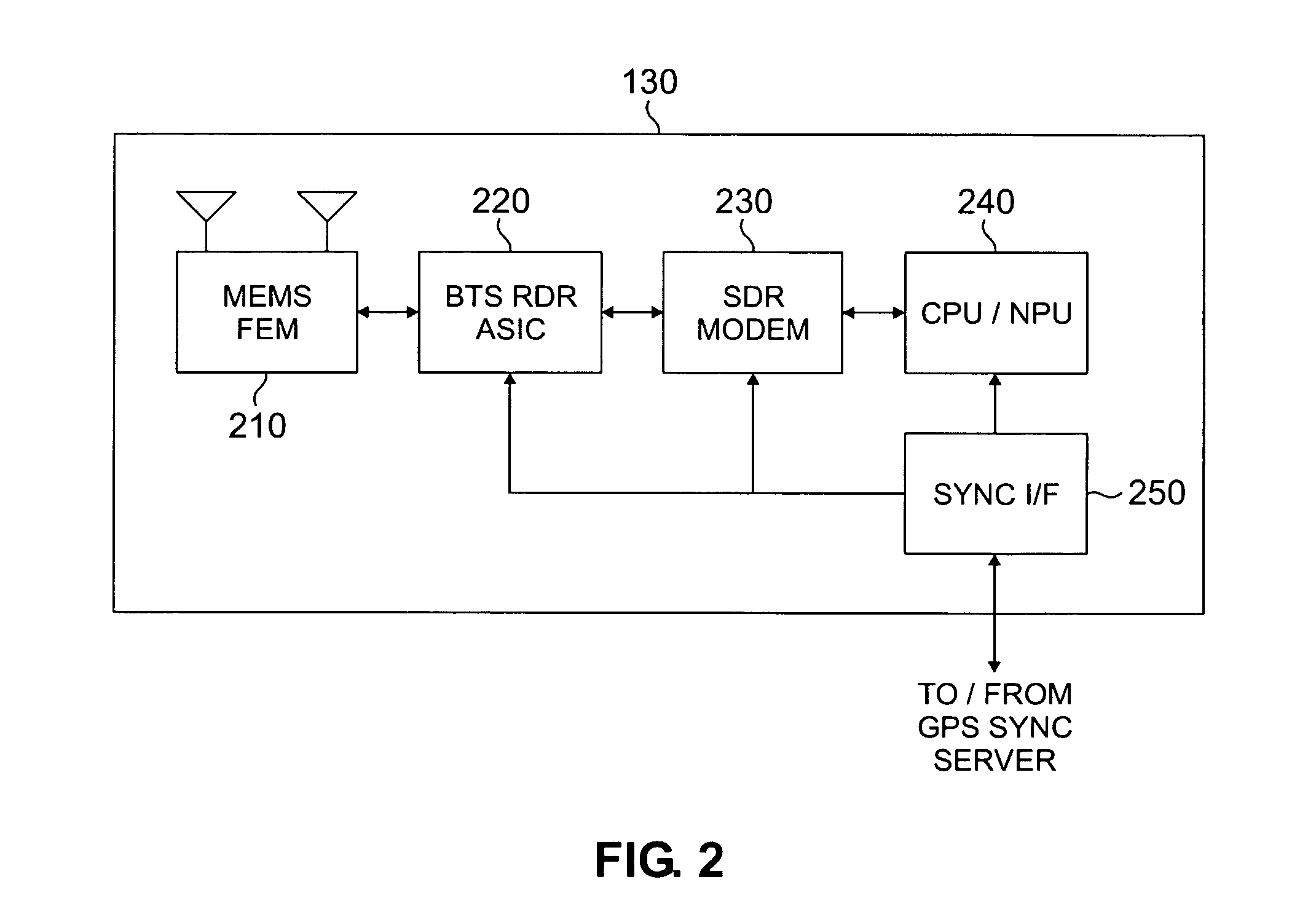Reconfigurable base station using mobile station RF ASIC
- Summary
- Abstract
- Description
- Claims
- Application Information
AI Technical Summary
Benefits of technology
Problems solved by technology
Method used
Image
Examples
Embodiment Construction
[0020]FIGS. 1 through 3, discussed below, and the various embodiments used to describe the principles of the present invention in this patent document are by way of illustration only and should not be construed in any way to limit the scope of the invention. Those skilled in the art will understand that the principles of the present invention may be implemented in any suitably arranged radio frequency transceiver.
[0021]FIG. 1 illustrates wireless network 100, which comprises base transceiver subsystems that are implemented using reconfigurable RF transceivers according to the principles of the present invention. Wireless network 100 comprises a plurality of base stations (or access points) 130, including exemplary base stations 130a, 130b, and 130c that communicate with a plurality of mobile stations (or wireless terminals), including exemplary mobile stations 141-147. Wireless network 100 also comprises Internet Protocol (IP) network 120, which may be, for example, the Internet or...
PUM
 Login to View More
Login to View More Abstract
Description
Claims
Application Information
 Login to View More
Login to View More - R&D
- Intellectual Property
- Life Sciences
- Materials
- Tech Scout
- Unparalleled Data Quality
- Higher Quality Content
- 60% Fewer Hallucinations
Browse by: Latest US Patents, China's latest patents, Technical Efficacy Thesaurus, Application Domain, Technology Topic, Popular Technical Reports.
© 2025 PatSnap. All rights reserved.Legal|Privacy policy|Modern Slavery Act Transparency Statement|Sitemap|About US| Contact US: help@patsnap.com



